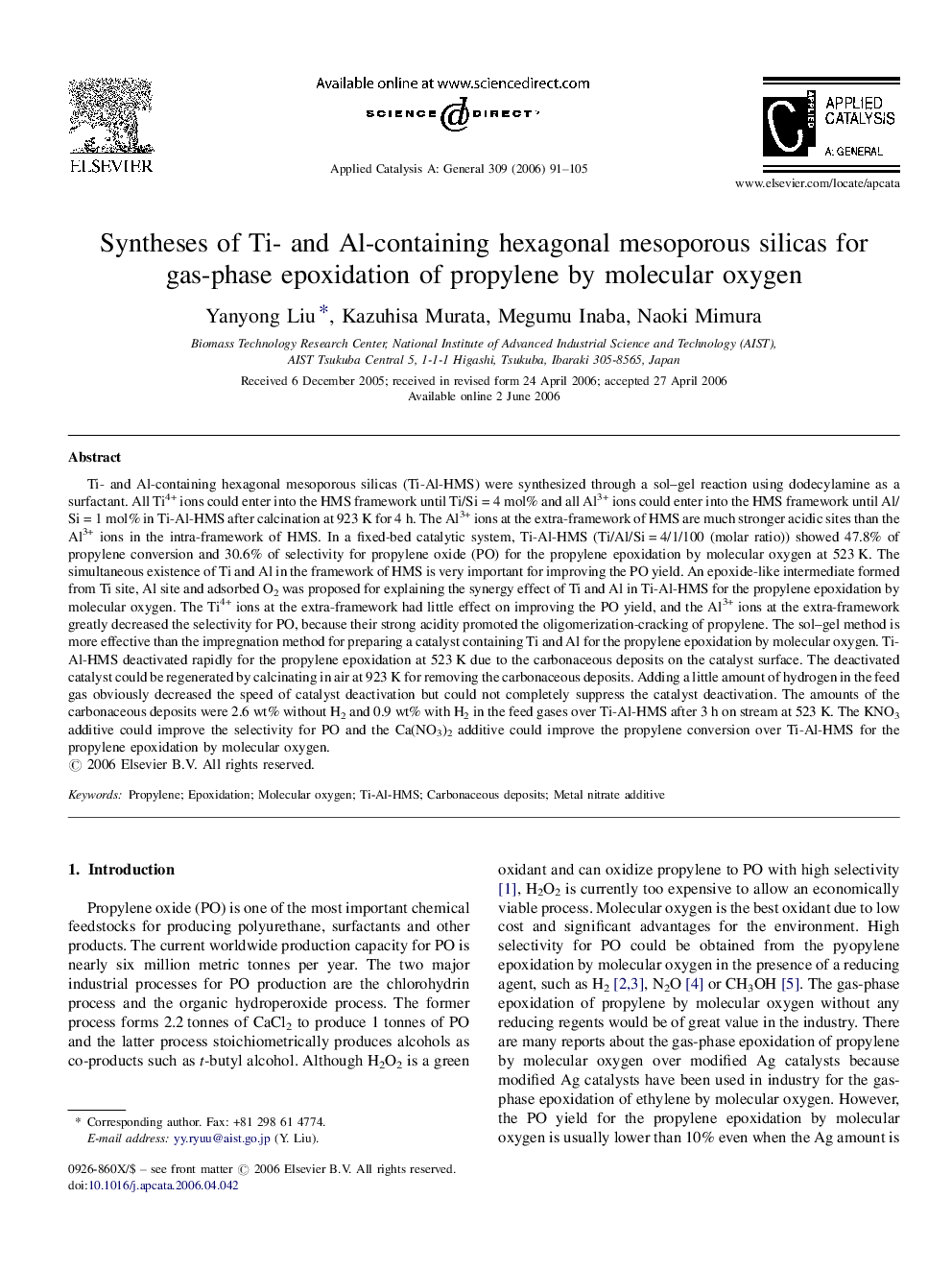| کد مقاله | کد نشریه | سال انتشار | مقاله انگلیسی | نسخه تمام متن |
|---|---|---|---|---|
| 43789 | 45988 | 2006 | 15 صفحه PDF | دانلود رایگان |

Ti- and Al-containing hexagonal mesoporous silicas (Ti-Al-HMS) were synthesized through a sol–gel reaction using dodecylamine as a surfactant. All Ti4+ ions could enter into the HMS framework until Ti/Si = 4 mol% and all Al3+ ions could enter into the HMS framework until Al/Si = 1 mol% in Ti-Al-HMS after calcination at 923 K for 4 h. The Al3+ ions at the extra-framework of HMS are much stronger acidic sites than the Al3+ ions in the intra-framework of HMS. In a fixed-bed catalytic system, Ti-Al-HMS (Ti/Al/Si = 4/1/100 (molar ratio)) showed 47.8% of propylene conversion and 30.6% of selectivity for propylene oxide (PO) for the propylene epoxidation by molecular oxygen at 523 K. The simultaneous existence of Ti and Al in the framework of HMS is very important for improving the PO yield. An epoxide-like intermediate formed from Ti site, Al site and adsorbed O2 was proposed for explaining the synergy effect of Ti and Al in Ti-Al-HMS for the propylene epoxidation by molecular oxygen. The Ti4+ ions at the extra-framework had little effect on improving the PO yield, and the Al3+ ions at the extra-framework greatly decreased the selectivity for PO, because their strong acidity promoted the oligomerization-cracking of propylene. The sol–gel method is more effective than the impregnation method for preparing a catalyst containing Ti and Al for the propylene epoxidation by molecular oxygen. Ti-Al-HMS deactivated rapidly for the propylene epoxidation at 523 K due to the carbonaceous deposits on the catalyst surface. The deactivated catalyst could be regenerated by calcinating in air at 923 K for removing the carbonaceous deposits. Adding a little amount of hydrogen in the feed gas obviously decreased the speed of catalyst deactivation but could not completely suppress the catalyst deactivation. The amounts of the carbonaceous deposits were 2.6 wt% without H2 and 0.9 wt% with H2 in the feed gases over Ti-Al-HMS after 3 h on stream at 523 K. The KNO3 additive could improve the selectivity for PO and the Ca(NO3)2 additive could improve the propylene conversion over Ti-Al-HMS for the propylene epoxidation by molecular oxygen.
Journal: Applied Catalysis A: General - Volume 309, Issue 1, 17 July 2006, Pages 91–105